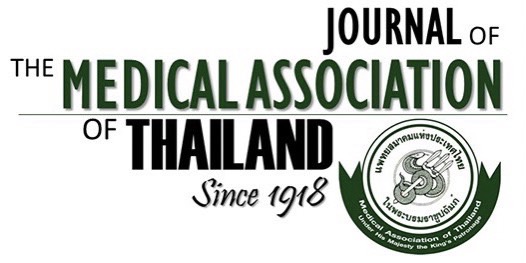Facilities and Services for People with Epilepsy-A Survey from the Northeast Thailand
Sunee Lertsinudom BSc, BCP*,******, Nanthapan Chainirun BPharm**,******, Somsak Tiamkao MD***,******, Sineenard Pranboon MSN****,******, Thanida Nuntasaen MPharm**, Supinya Tuntapakul BPharm, BCP*,******, Siriporn Tiamkao MD*****,******, Kutcharin Phunikhom MD*****,******
Affiliation : * Division of Clinical Pharmacy, Faculty of Pharmaceutical Sciences, Khon Kaen University, Khon Kaen, Thailand ** Pharmacy Department, Srinagarind Hospital, Faculty of Medicine, Khon Kaen University, Khon Kaen, Thailand *** Division of Neurology, Department of Medicine, Faculty of Medicine, Khon Kaen University, Khon Kaen, Thailand **** Nursing Division, Srinagarind Hospital, Faculty of Medicine, Khon Kaen University, Khon Kaen, Thailand ***** Department of Pharmacology, Faculty of Medicine, Khon Kaen University, Khon Kaen, Thailand ****** Integrated Epilepsy Research Group, Khon Kaen University, Khon Kaen, Thailand
Background : Availability of antiepileptic drugs and diagnosis facilities in hospitals contributes to accessibility to and efficiency
of treatment for epileptic patients and their good quality of life.
Objective : To survey the facilities and services for people with epilepsy in the Northeast of Thailand.
Material and Method: Questionnaires were sent to 318 hospitals to obtain information about the facilities of epilepsy
services in terms of availability of antiepileptic drugs and epileptic diagnostic facilities. The data were analyzed in percentages.
Results : Out of the 318 hospitals, 277 hospitals (87.1%) returned the questionnaires. In all, 51.51% were the general
hospitals and 91.23% were community hospitals. In the general hospitals, 4 standard antiepileptic drugs (AEDs) were
available, including carbamazepine, phenobarbital, phenytoin, and sodium valproate of 100, 88.24, 88.24, and 82.35%,
respectively. For the community hospitals, the standard AEDs were available of 91.54, 78.85, 84.23, and 85.38%, respectively.
The surveyed hospitals had the standard original AEDs, namely, carbamazepine, phenytoin, and sodium valproate of 3.61,
36.46, and 38.63%, respectively. The hospitals had at least one of the new AEDs of 40.07%. The most common type of
intravenous AEDs used in the general hospitals was phenytoin (82.35%), followed by sodium valproate and phenobarbital
(76.47 and 58.82%, respectively). In community hospitals type of used IV AEDs was phenytoin, phenobarbital, and sodium
valproate (58.08, 22.69, and 9.23%, respectively). At the general hospital level, the most common available type of diagnostic
facility was CT scan (66.7%), followed by electroencephalography (EEG) (21.20%) and MRI (18.2%); whereas at the
community hospital level, CT scan was available in 12.30% of the hospitals and no EEG or MRI.
Conclusion : Not all of the antiepileptic drugs are available at the hospitals in the Northeast Thailand, especially the new and
original AED group. There is also a shortage of epileptic diagnostic facilities. Thus, appropriate solution should be involved
creation of a network of treatments and services for epileptic patients in the Northeast Thailand in order to have access more
quality services.
Keywords : Facilities of services, Epilepsy, the Northeast, Antiepileptic drugs



